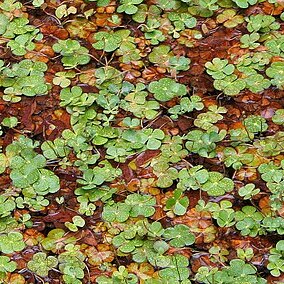A fern which looks like a four leafed clover. The new leaflets are covered with long silver hairs. It grows 2-30 cm high. The rootstock is long and creeping. It is branched. The stalks are 2-30 cm long and clustered on the underground rootstock. The leaflets are 1-4 cm long by 0.5-1.2 cm wide. They are broadly oval or wedge shaped. They can be grey or silver and can have hairs. The leaf that bears spores is 1-6 cm long. The capsule is 0.5-1 cm long. There are about 2 teeth at the base.

